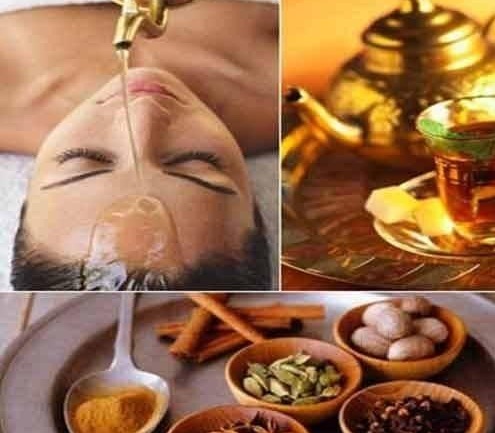
What is Panchkarma
Pancha means 'five,' Karma means 'action,' and refers to five cleanse techniques. Once the body has gone through the specific Purva Karma techniques of external oleation and therapeutic heat, usually of a seven-day duration, elimination is ready to take place.
Adjunctive Procedures of Panchakarma
There are also a variety of procedures used to enhance elimination and subdue certain doshic imbalances. They generally employ some form of snehana or Swedana, and often address the functions of a particular dosha. These procedures can be usued outside Pancha Kamrma, by themselves, or in conjunction with other treatments. Some of these procedures are: Shirodhara, pishinchhali, pinda Swedana, herbal steams/baths, bastis, herbal scrubs, pastes, and massage techniques.-
Lifestyle During Pancha Karma
Pancha Karma is a powerful therapy that provides a unique opportunity for the system to repair and rejuvenate. Those undergoing this program gain the maximum from it if they focus completely on the healing process taking place. Certain changes in one's diet and daily activities are necessary to insure the greatest results. These lifestyle adjustments begin with the onset of Purva Karma, the preparatory phase, and continue through the end of Paschat Karma, the post-treatment phase.
Ideally, the usual preoccupation with work and family is put aside. Schedules should be light, and experiences that invoke strong emotions should be avoided. It is important to forego sexual activity during and immediately after treatment. Sensory input from computers and T.V. should be minimal if at all. Even reading should be done in moderation. Strenuous activity and exercise should also be kept to a minimum. - Meditation and prayer are encouraged according to one's own spiritual or religious practice. Even more benefit comes when asana (yoga postures) and pranayama (breathing techniques) is included.
- Diet is prescribed by the Ayurvedic practitioner and consists of light, nourishing, and easily digestible foods such as steamed vegetables and kichari. The dietary regimen during Pancha Karma emphasizes kichari for a number of reasons. It does not tax the digestive agni and it helps to liquefy ama. It is highly nourishing, digests easily and calms the mind.
|| Nakshatra Ayurvedam || Offers Panchkarma Are :
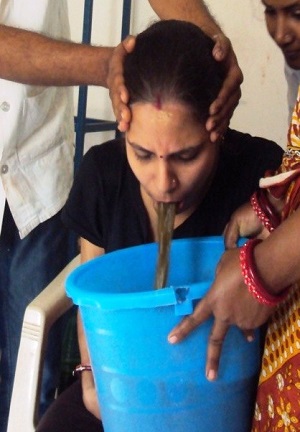
1. Vamana
It is the procedure where patient takes vaman dravya (medicines that helps for emesis). By administration of this dravya patient vomits all the impurities combined with Katha Disha.
Indications :
Diabetes, Asthama, Chronic Cold, Chronic sinusitis, Chronic indigestion, Skin diseases, Food poisoning, Epilepsy, Anorexia, Specific Abdominal disorders & In various “Kapha” predominant disease…
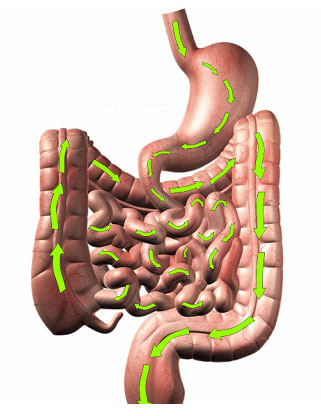
2. Virechana
Virechana for Pitta imbalances such as hormonal dysfunction, fast digestion, acne, heat eruptions on the skin, anger, stagnet liver, etc. Therapy is focused on relieving Pitta from the small intestine.
Indications :
Chronic fever, Skin diseases, Acne, Allergic disorders, Eczema, Psoriasis, Ascites, Arthritis, Jaundice, Infertility, Oligospermia, Hyper Acidity, Worms, Gout & in various “PITTA” predominant diseases.
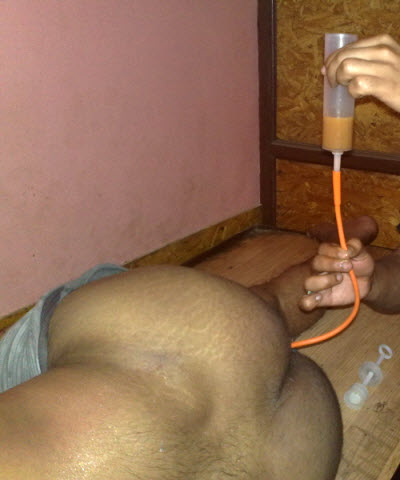
3. Basti
Basti for Vata conditions such as arthritis, emaciation, anxiety, nervousness, depression, insomnia, brittle bones, constipation, nervous system disorders, etc. Therapy is focused on nourishing and/or relieving Vata from the colon.
Indications :
Chronic constipation, Paralysis, Sciatica, Backache, Gynaec disorders, Infertility, Oligospermia, Arthritis, Heart disease & All types of pains, etc.
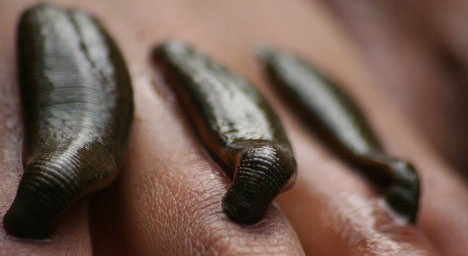
4. Rakta Mokshan
Rakta Mokshan is used to clean the blood, however there is some difference in opinion regarding this therapy, and many practitioners employ a second kind of Basti instead.
Indications :
Gout, Leucoderma, Skin diseases, Scabies, Chronic itching, Skin rashes, Alopecia, Urticaria, Hyper tension, Enlargement of liver & spleen
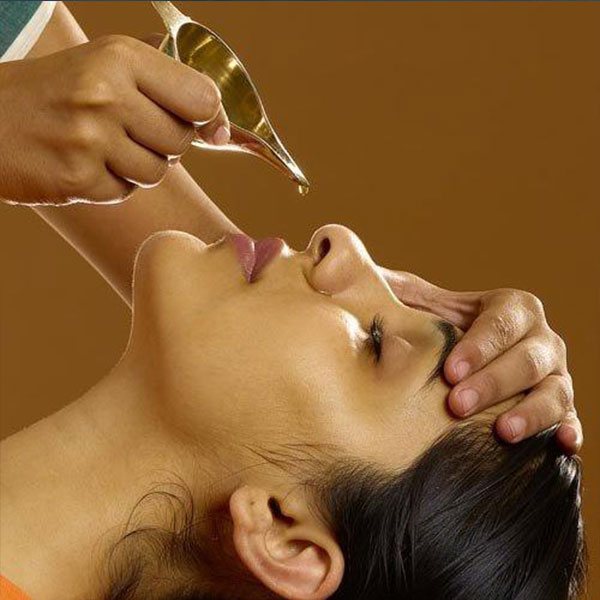
5. Nasya
Nasya used to alleviate sinus conditions and improve brain and sensory function.
Indications :
Various disease of eye, ear, nose, throat & head, Mental disorders, Epilepsy, Insomnia, Hair problems, Headache, Migraine, & To promote the intelligence and memory & mental functions.
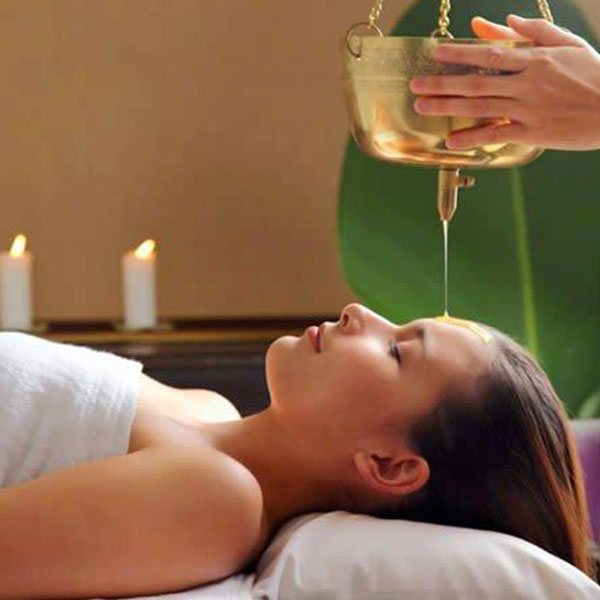
6. Shirodhara
Shirodhara is a part of Ayurveda therapy, which involves mildly pouring liquids above the forehead and it can be a part of the steps which are involved in Panchakarma. Shirodhara is derived from a Sanskrit word, 'Shiro' which means 'Head' and 'Dhara' which means 'Flow'. The liquids which are used in the treatment of Shirodhara totally depend on the treatment you have chosen. Liquids that are used in Shirodhara are- coconut water, oil, butter, plain water, milk, or even buttermilk.
Indications :
Headache, Hyper tension, Dandruff, Grey hair, Sleeplessness, Paralysis, Mental disorders, Diseases of eye, Stress, Depression, Lack of confidence, Lack of concentration, Epilepsy, Dementia, Migraine, For relaxation of mind, To improve the function of 5 senses, To improve intelligence & To promote self esteem.
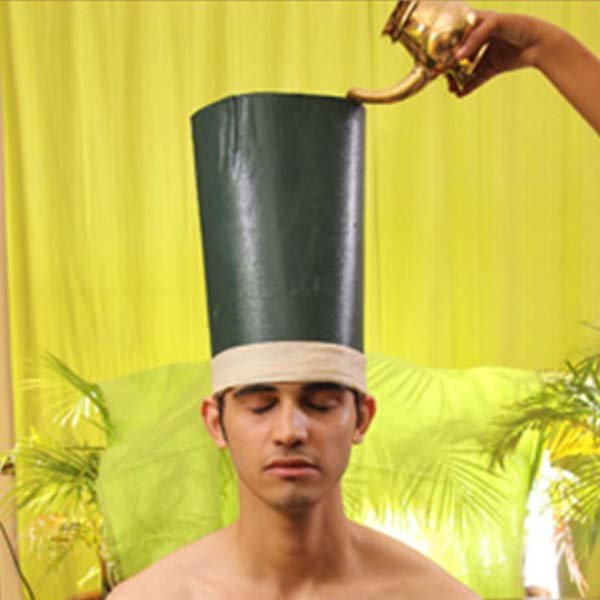
7. Shirobasti
Shirovasti is an ayurvedic therapy or procedure in which outer area of head is covered by a leather cap keeping hollow inside to put oil in it for a certain period in such a way that oil should not be leaked out. Shiro means head and Vasti means container that holding liquids. Therefore, shirobasti means holding oil on the head for a specific period of time with use of cap fitted on the head in such a way that oil does not leak out.
Indications :
Diseases of head, Hair problems, Numbness in head, Facial paralysis, Myopia, Mental disorders & For mental relaxation.
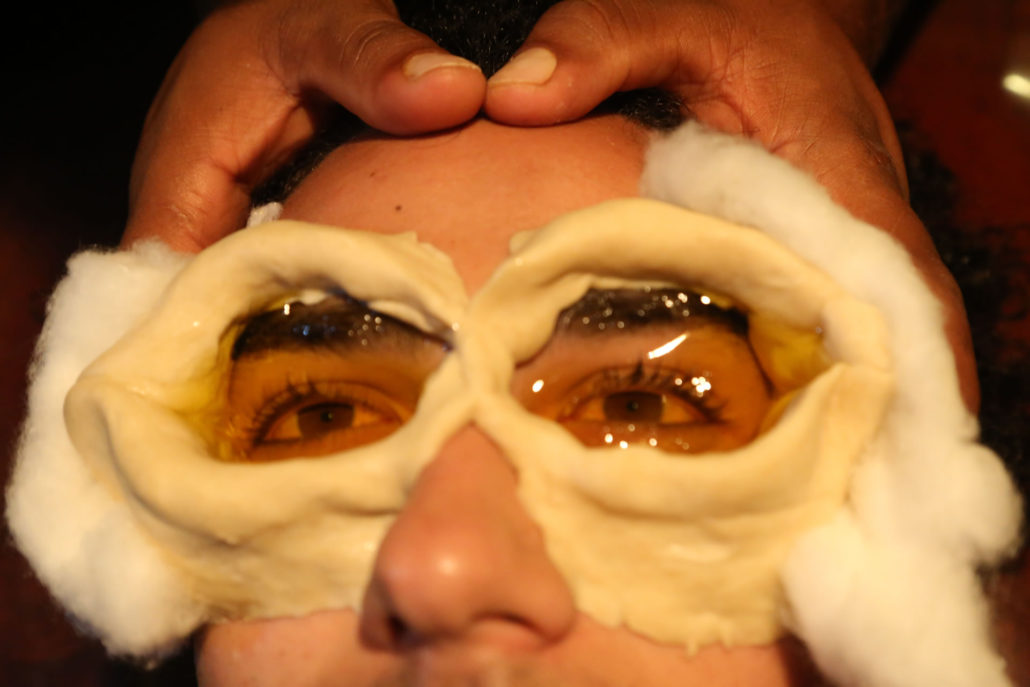
8. Netra Tarpana
Netra Tarpana is a unique Ayurvedic therapy providing unequaled treatment to the eyes. Netra Tarpana serves not only for the treatment of eye diseases but is a brilliant prevention method which gifts eyes cleanliness, rejuvenation and perfect eyesight.
Indications :
Fresh Myopia & Hypermetropia, Eye strain, Redness of eyes, Dryness in eye, Watering of eyes, Burning of eyes & Diseases of retina.
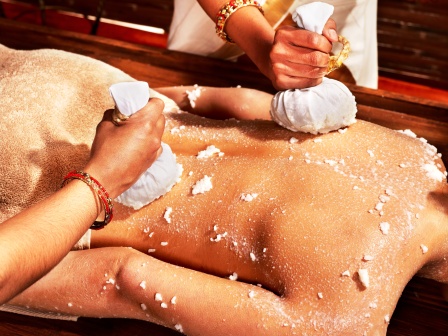
9. Shastika Shali Pinda Swedana
Shastika Shali Pinda Swedana is a type of Ayurvedic treatment in which a sweat-inducing massage in given to the patient using a preparation containing milk and rice to provide relief from pain and stiffness. This therapy is also used to improve the muscle strength. It also rejuvenates and re-energizes the body.
Indications :
Polio myelitis, Muscular dystrophy, Arthritis, Stiffness of body, Paralysis, Cerebral Palsy & To increase vitality.
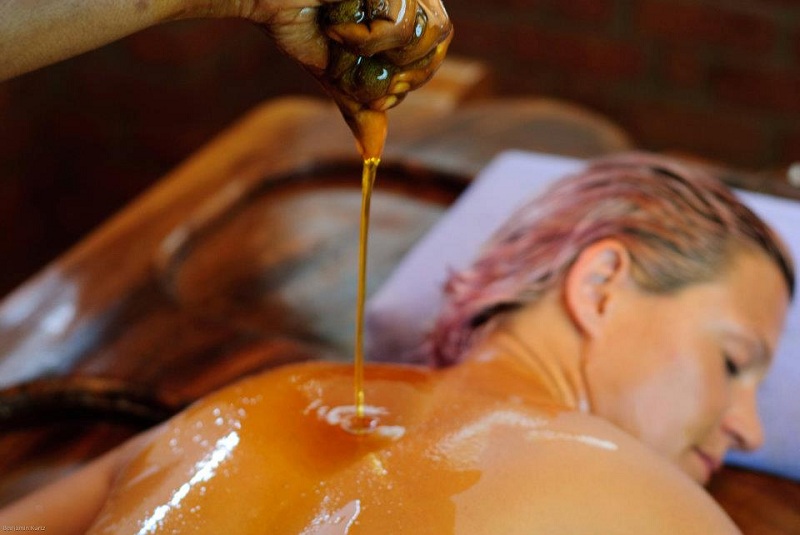
10. Pizhichil
Pizhichil is a type of ayurvedic massage which combines of two modes of therapies, i.e. oil therapy and heat therapy. It is a mild and coordinate body massage, which is done with the constantly flowing warm medicated herbal oil.
Indications :
Arthritic pain, Physical & sexual weakness, Exhaustion, Stiffness of body, Hypertension & To increase vitality.
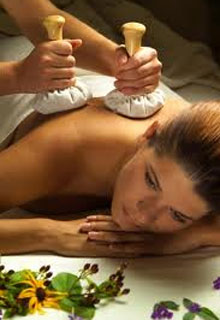
11. Patra Pinda Swedana
Patra Pinda Sweda, is a form of sweat therapy used to provide relief from pain and rejuvenate and strengthen the soft tissues, joints, and muscles in the body. It is prepared from herbal ingredients such as the leaves of medicinal plants to induce sweating.
Indications :
Polio myelitis, Paralysis, Nervous disorders, Backache, Frozen shoulder, Arthritis, Fatigue & Various “Vatta” predominant diseases.
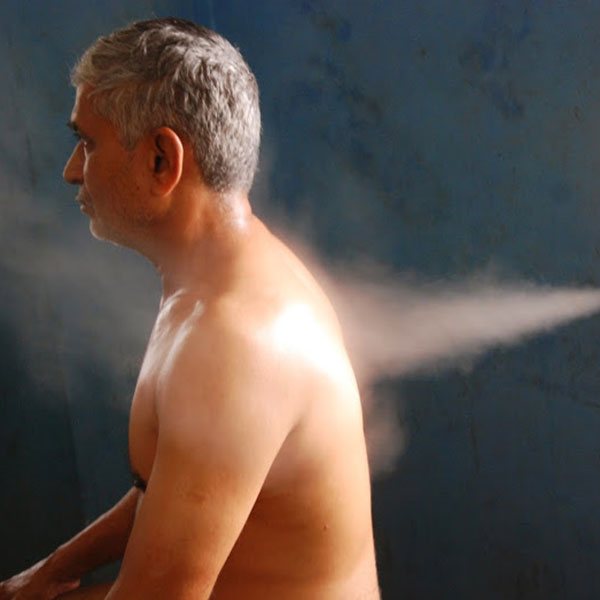
12. Nadi Swedana
This is a localized application of steam with herbal decoctions and medicated oils. This type of steam treatment focuses on specific areas of your body, such as sore joints or muscles, to improve mobility and flexibility, and to reduce pain and rigidity. It is the perfect therapy for those suffering from acute or chronic pain anywhere in the body, such as tendonitis, neck and shoulder pain, sciatica, frozen shoulder, and more.
Indications :
Backache, Arthritis, Cervical Spondylitis, It relieves pain & oedema of joints, Removes muscular stiffness, Removes malas of body, Improves joint mobility & blood circulation.
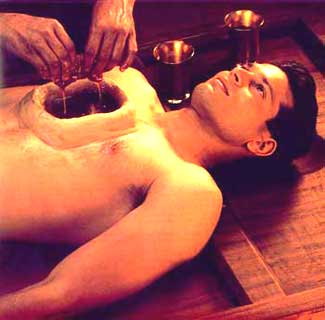
13. Hrid Basti
Hrid Basti in Sanskrit refers to Hridaya, the heart and Basti, the container or retainer. This is also called as Urobasti (Uro=chest and basti=retaining something inside). So Hrid Basti is an oil bath on the heart. This suggests an Ayurvedic hot oil treatment where the medicated hot oil preparation or freshly prepared herbal decoction is poured over the heart region.
Indications :
Various heart diseases.
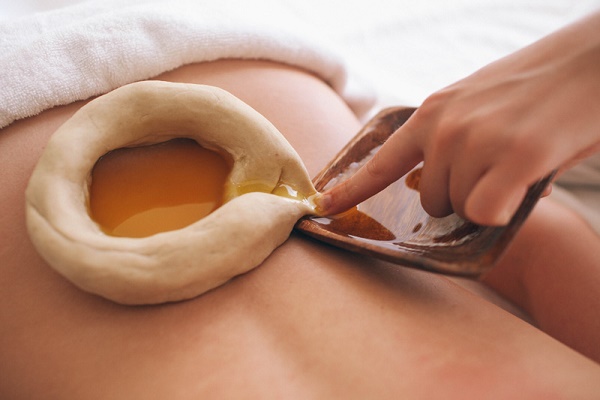
14. Kati Basti
Kati basti is a medicinal oil treatment for relieving tensions of the lower back. The patient lays down on their stomach, a ring is fixed on their back with a paste made of a special flour and water. Than hot oil is poured inside that ring than patient have to stay in the same position for some time according to the disease condition
Indications :
Backache, Sciatica, Spondylitis, Slip disc.
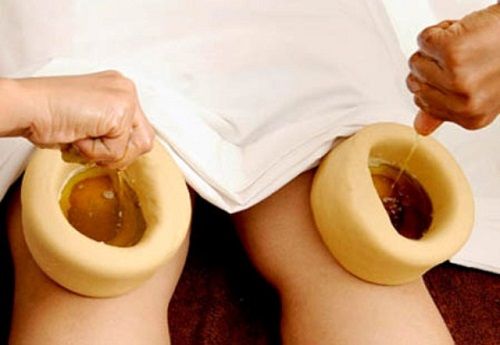
15. Janu Basti
Janu basti is one of the upakarma (sub-type) of Panchakarma. The word janu refers to knees and Basti stands for container or retaining something inside mainly the medicated oil. This procedure is done in order to strengthen the knee architecture i.e muscles, joints and improvise the functions of knee joint thereby preventing it from further degenerative changes.
Indications :
Knee pain & Arthritis.
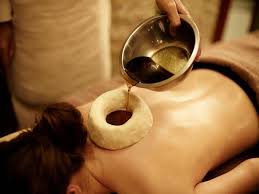
16. Greeva Basti
It is an Ayurvedic neck care and basically a hot oil therapy. Greeva Basti is bathing the neck region with medicated oil or freshly prepared herbal decoction. The procedure does oleation and sudation around the neck region simultaneously.
Indications :
Cervical spondylitis, Frozen shoulder & Osteo arthritis.
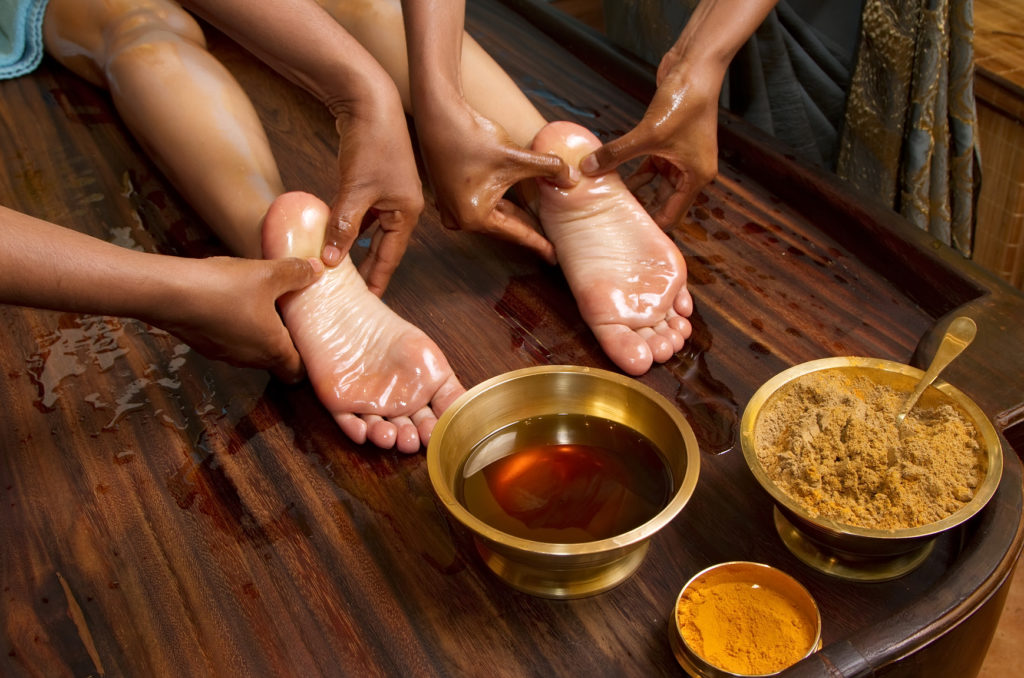
17. Abhyanga
Abhyanga ("oil massage") is a form of Ayurvedic medicine that involves massage of the body with large amounts of warm oil. The oil is often pre-medicated with herbs for specific conditions.
Indications :
Lean & Thin people, Dryness of skin, Insomnia, Obesity (Dry Massage- Udvartana), Loss of apetite, Paralysis, Fatigue, Arthritis, Joint pain, And Pre-treatment for panchkarma.
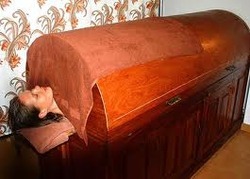
18. Steam Bath (Bashpa Swedana)
The leaves of Medicinal plants are boiled with water in swedanayantra & resulting Vapour is passed on the whole body of the person seated in the steambox. This therapy is followed by a specific Massage. It gives lightness & energy to the body.
Indications :
Paralysis, Arthritic pain, Exhaustion, Neuralgic pain, Stiffness of body, Various “Vatta” predominant diseases & Pre-treatment for panchkarma.
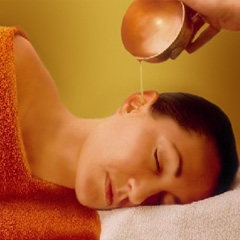
19. Karna Purana
The ayurvedic procedure of instilling medicated oils or clarified butter (ghee) in the ears is called Karna Purana. It is beneficial in ear diseases including hearing loss, tinnitus, Meniere’s disease (characterized by mainly vertigo), swimmer’s ear and other diseases related to the ears.
Indications :
Tinnitus, Deafness, Earache, Chronic Sinusitis, Facial paralysis, Torticolis.
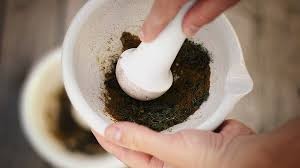
20. Matra Basti
Matra Basti (daily oil enema) is used by someone emaciated by overwork or too much exercise, too much heavy lifting, walking too long a distance, too much sexual activity or someone with chronic vata disorders.
Indications :
vata vitiation, excessive weakness, in sexual intercourse, excessive travelling, excessive walking, excessive lifting of weights, excessive work, weakness
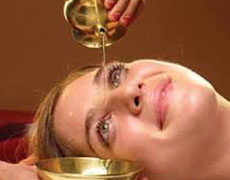
21. Netra Dhara
This is a special therapy for the eye and is done by using medicated decoction or oils. In this process, the eyes are washed with a medicated mixture of oils. In this special cleansing technique, liquid herbal preparation is poured in a continuous stream over the eyes for around 30 minutes resting the head in a comfortable position. This treatment involves the washing of the eyes with the Triphala water which cleanses the eyes and also removes various eye related problems.
Indications :
Conjunctivitis, Watering, Dry eye, Eye strain, Eye Redness, Blepharitis
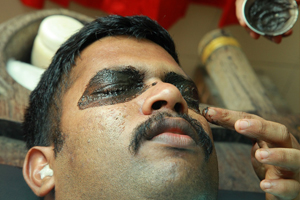
22. Bidalak Lepam
This is a special therapy for the eye and is done by using medicated lepam (mixture of water and medicated powder). In this process, the eyes are painted with a medicated mixture of lepam. In this special technique, the medicated mixture are washed out after 15 to 20 Minutes.
Indications :
Conjunctivitis, Watering, Dry eye, Eye strain, Eye Redness, Blepharitis
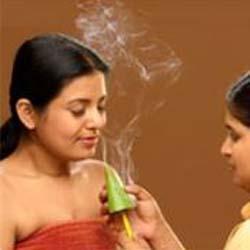
23. Dhoom Pan
Traditional therapeutic method. Therapeutic smoke gets into ears and nose.
Indications :
treatment of vata and kapha
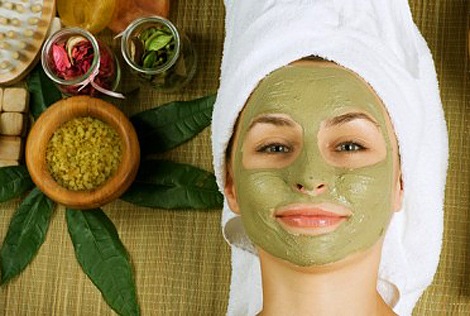
24. Mukh Lepam (Ayurvedic Facial)
Ayurvedic facial is one of the best natural beauty treatments to get healthy and glowing skin. It includes a massage using some special herbal oils or creams.
Indications :
For all type of skin diseases and beauty treatment
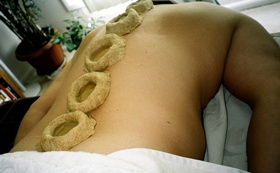
25. Spine Basti
Spine Basti is an important Ayurvedic treatment for pain management that focus on the spine or the vertebral column. It includes pouring of specially prepared warm herbal oil over the spine area.
Indications :
Backache (particularly the lumbar region), Degenerative spine changes, Compressed discs, Osteoporosis, Sciatica, Hip pain, Shoulder pain, Spinal cord compression.
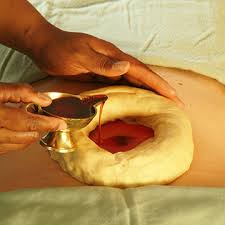
26. Nabhi Basti
In this, a small compartment or cabin is constructed around the navel with wet flour of black gram (as in Kati Vasti or Janu Vasti). This gives space to pool oils or juices or decoctions prepared from herbs.
Indications :
Relieves digestive symptoms such as irritable bowel, flatulence, poor appetite, constipation and abdominal discomfort
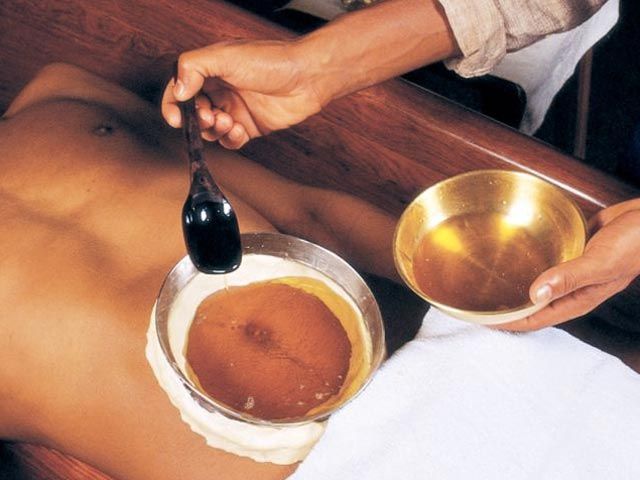
27. Nabhi Puran
Nabhi Purana is an Ayurvedic treatment method. Here, navel pit is filled with medicaments, mainly medicated oils. It is mainly indicated in treating Vata and Pitta disorders.
Indications :
Gastritis, uncontrolled diarrhea, sproue, irritated bowl syndrome (IBS), abdominal pain
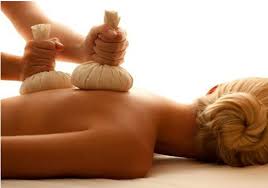
28. Valuka Sveda
Valuka Sweda is a treatment in which sand is used for fomentation (sweat inducing) of painful parts. In this treatment, the sand is heated to tolerable temperature and tied in a bolus. The bolus is heated in a pan. The heated bolus is continuously rubbed over the afflicted area, low back in this case.
Indications :
It is used mainly to provide relief from pain, inflammation, swelling and stiffness (catch) associated with heel pain.
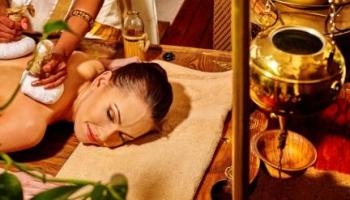
29. Upanah Sveda
Upanah Sveda is a treatment in which multiple medicinal powder is used for fomentation (sweat inducing) of painful parts. In this treatment, the multiple medicinal powder is heated to tolerable temperature and used on effected body part.
Indications :
It is used mainly to provide relief from pain, inflammation, swelling and stiffness (catch) associated with heel pain and knee-joint pain.
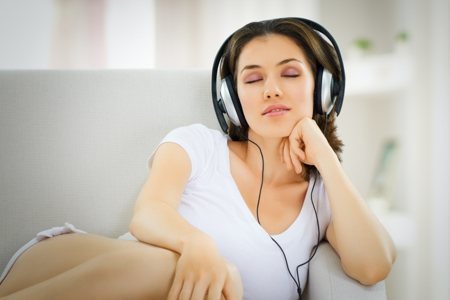
30. Ayurvedic Music and Sound Therapy
There are multiple traditional "Raagas" that we are using in classical music are very useful in multiple diseases as per ayurvedic ancient textbook ("The Naad"). The special voices like Shankh, Sowing bowl, Omkaar, Mantras, Ghantnaad (Bell) are also very useful in ayurvedic sound therapy.
Indications :
All psychiatric disorder, Garbh Sanskar, Viral diseases, Stress and depression and multiple kind of pain.

31. Agni Karm
Agnikarma (Thermal Cautery) is an Ancient Medical Technique derived from the Indian system of medicine, Ayurveda. The technique of Agnikarma has been designed to relieve various muscular and joint disorders.
Indications :
Painful conditions of musculoskeletal disorders., Hard, elevated and desensitized vranas/ulcer, Granthi, Arsas, Bhagandara, Arbuda, Sleepada, Charmakeela and Antravridhi, Severe bleeding condition.
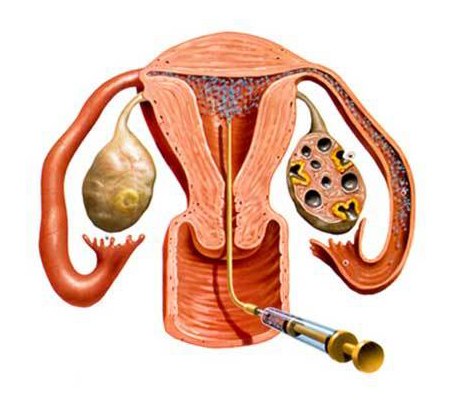
32. Uttar Basti
Uttara Vasti or Uttara Basti is one among Panchakarma treatments. Here, liquid medicines are administered through urethral or vaginal routes. Thus Uttara Basti targets toward diseases of urinary and genital system.
Indications :
It is indicated in menstrual problems like amenorrhea, dysmenorrhea, menorrhegia, leucorrhea, primary and secondary infertility, to remove Tubal blocks, recurrent abortions, PCOS